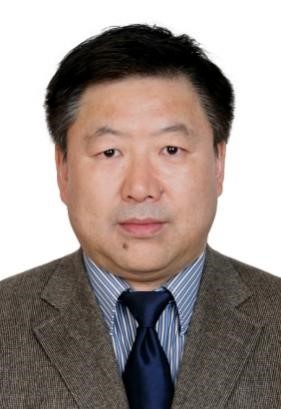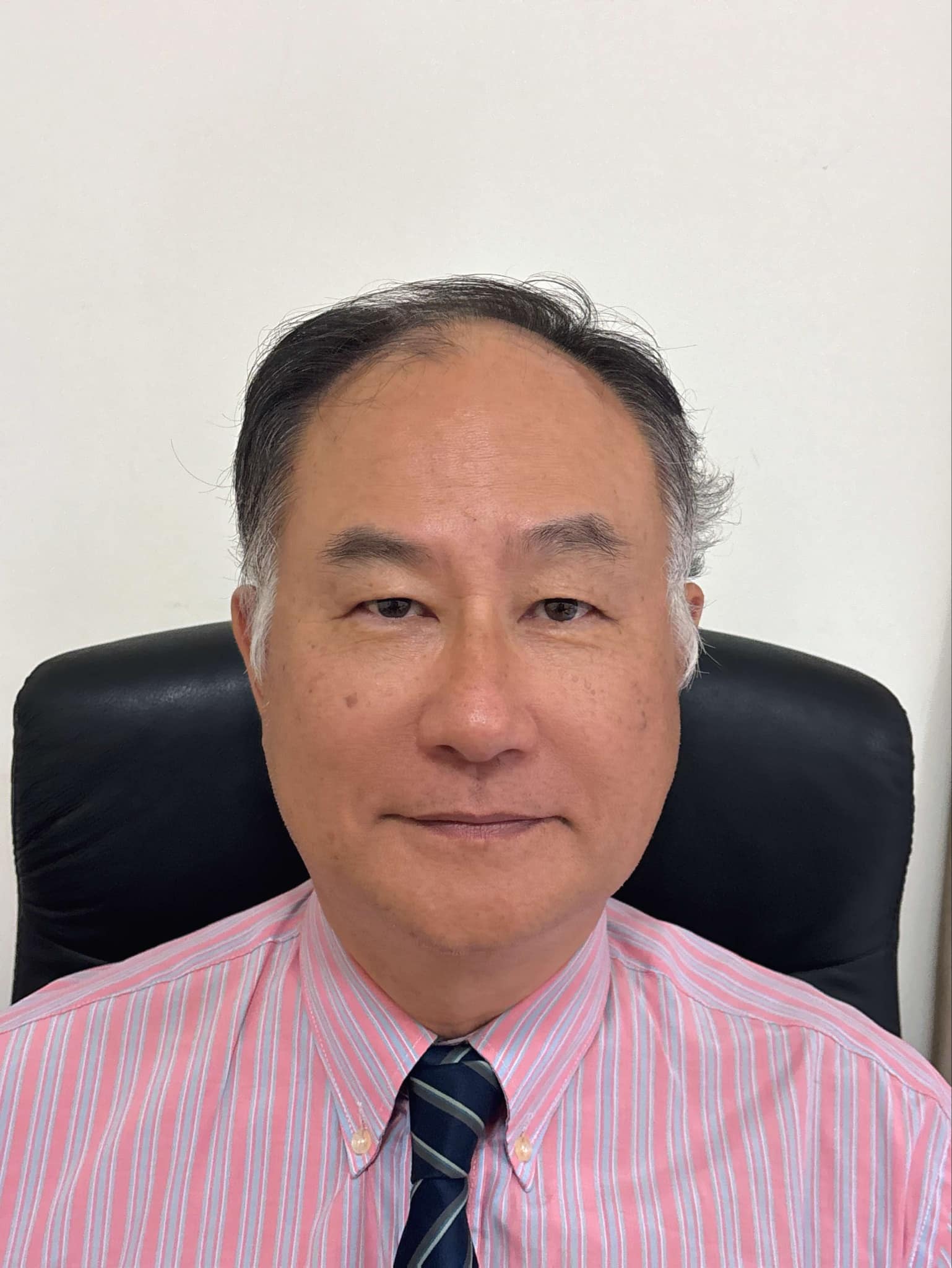|

Prof.
Xiping Guo
Northwestern Polytechnical University
|
Speech Title:
Alloying Effects and Ultrahigh Temperature Directional Solidification of
Nb-Si Based Alloy
Abstract: Nb-Si
based ultrahigh temperature alloys possess high melting points, low
densities and excellent room-temperature and high-temperature mechanical
properties, and are expected to become the next-generation
high-temperature structural materials for aircraft engines. Alloying is
an important means to improve the comprehensive performance of Nb-Si
based alloys, especially the high-temperature oxidation resistance
performances. Systemic and synergetic alloying effects has been
conducted on this material system, revealing the influence of elements
such as Ti, Cr, Al, Hf, B, V, Zr, Mo and especially composite effects on
the microstructure and properties of the alloys. Advanced
multi-component Nb-Si based ultrahigh temperature alloys with excellent
comprehensive performance have been developed. The integral directional
solidification technique with the use of crucibles at the melt
temperature above 2000 ℃ can significantly improve the the axial
temperature gradient and avoid both the intense convection in the melt
ahead of the solid/liquid interface and Kelvin effect occurred during
zone melting directional solidification process. Therefore, it can
prepare alloys with obvious directional growth effect and excellent
mechanical properties. During integral directional solidification, as
the withdrawing rate increases, the number of eutectic cells in the
directionally solidified microstructure increases, the average diameter
of eutectic cells and the interlamellar spacing in the eutectic cells
decrease, and the eutectic coupling growth degree enhance. The
solid/liquid interface undergoes an evolution process from a planar to a
fine cellular and then coarse cellular. The integrally directional
solidification significantly improves the room-temperature fracture
toughness, high-temperature tensile strength and stress-rupture life of
the Nb-Si based ultrahigh temperature alloy. After integral directional
solidification, the maximum KQ average value reaches 26.8 MPa·m1/2, the
creep elongation at 1250 ℃/75 MPa for 216 h is only 0.79 %, the tensile
strength at 1400 ℃ reaches 183.5 MPa, and the tensile strength at 1500 ℃
reaches 113.8 MPa. Special ceramic molds for the investment casting of
Nb-Si based ultrahigh temperature alloy turbine blade have been
successfully developed. Under the conditions of a melt temperature of
2000℃ and a withdrawing rate of 20 μm/s, a directionally solidified
model turbine blade of Nb-Si based ultrahigh temperature alloy has been
successfully prepared.
Biography:
Prof Guo got his Ph. D in the field of Materials Science and Engineering
in Northwestern Polytechnical University in 1992. He was promoted to a
full professor in 2000 in Northwestern Polytechnical University. Prof.
Guo is a member of the Materials Major Accreditation Committee of the
China Engineering Education Accreditation Association. He was a
post-doctoral researcher in University of Toyama with the scholarship of
Japan Society for the Promotion of Science (JSPS) from November 1998 to
November 2000. He was awarded the Program for New Century Excellent
Talents in University by the Ministry of Education of China in 2004. He
was awarded the title of “Excellent Backbone Teachers in National Higher
Education Institutions” by the Ministry of Education of China in 2002.
Prof. Guo’s main research interests are in the field of physical
metallurgy of ultrahigh temperature structural metallic materials, such
as Nb-Si based ultrahigh high temperature alloys. His research focuses
on the compositional design, melting and integrally directional
solidification techniques, and microstructure and property evaluation of
the Nb-Si based ultrahigh temperature alloys. His has also developed
silicide based protective coatings for Nb-Si based alloys. He has
published more than 190 SCI indexed academic papers. His H-index is 31
now. He has obtained 6 ministry-level science and technology progress
awards and 10 authorized national invention patents of China. He has
supervised 24 Ph. D and 87 master degree students.
|
|

Prof. Kienwen
Sun
National Yang Ming
Chiao Tung University
|
Speech Title: Chemically
Synthesized Barium Silicate for Passive Radiative Cooling Applications
Abstract: Here
we investigate the chemically
synthesized barium silicate and barium hexafluoro silicate as passive
cooling materials (PCMs). These materials displayed strong Mid-IR
absorption in the FTIR measurements. These PCMs can be combined with
various polymers to be drop-cast, spray-coated or electrospun onto
highly reflective metallic substrate to fabricate cooling devices and
fabrics. These composites are high in infrared emissivity allowing the
heat transfer between silicates and polymers via phonon resonance
coupling to effectively absorb thermal energy from both the environment
and a portion of solar radiation and convert it into Mid-infrared
(Mid-IR) emission within the atmospheric transmission window (8 to 14
µm). Optimum temperature reductions of 8 ◦C
and 13 ◦C
were achieved in experiments conducted indoor and outdoor, respectively.
Moreover, the composites with high heat conductivity can be demonstrated
to significantly enhance the heat dissipation efficiency of buildings,
thereby reducing reliance on active cooling systems. Lastly, the
composites display excellent weather resistance, withstanding acid rain
and salt corrosion, and maintained its original structure under
undergoing UV accelerated aging tests based on the ASTM-G154
standard. Most importantly, the synthesis processes are cost-effective
with high yields. By converting the environmental waste heat into Mid-IR
emission and projecting into outer space, it can help alleviate global
warming to certain extent.
Biography: Dr. Kien
Wen Sun was born in Taipei, Taiwan. He holds a Ph.D. from the Department
of Electrical Engineering at Princeton University in New Jersey, United
States. From 1995-2000, he was on the faculty of the Electronic
Engineering at Feng Chia University, Taiwan. He jointed the faculty of
Department of Physics as a professor at National Dong Hwa University,
Hualien, Taiwan, from 2000-2005. Since year 2005, he became a professor
of Department of Applied Chemistry at National Yang Ming Chiao Tung
University (formerly known as National Chiao Tung University), Hsinchu,
Taiwan. During his sabbatical in 2012, he was a visiting professor at
Department of Electrical and Computer Engineering of University of
Waterloo, Canada. Dr. Sun was appointed as the Department Chair of
Applied Chemistry at NCTU from 2012-2014. He was also a Joint
Appointment Professor at Department of Electronics Engineering and
Director of the Center of Nano Science and Technology at National Chiao
Tung University from 2016-2019. His research interests include
femtosecond laser and laser spectroscopy in III-V compound
semiconductors, spintronics, nanoimprint, nanolithography,
nanoelectronics, organic/inorganic solar cells, diamond related
nanomaterials, perovskites and perovskite LEDs, and chemosensors. He has
published more than 200 SCI journal papers in above research fields. He
is a member of Phi Tau Phi Scholastic Honor Society and Fellow of Hong
Kong Chemical, Biological & Environmental Engineering Society (HKCBEES).
He was given the Rudolph A. Marcus Award by Publishing Division of
Cognizure and LOGNOR in 2017 and Taiwan Future Tech Award on 2020. He
has served as reviewers for numerous high impact international journals,
such as Nature Communications, Advanced Functional Materials, Advanced
Materials, The Innovation, Nanoscale Horizons, etc. He served as Guest
Editors of several Special Issues of Chemosensors and Talanta Open and
is currently a Topic Editor and an Editorial Board Member (analytic
chemistry) of Chemosensors. |
|

Prof. Ruizhi
Wu
Harbin Engineering University
|
Speech Title: Balancing
strength and ductility of LA141 alloy with a micro-nano laminated
structure
Abstract: The
laminated LA141 sheets were processed by the accumulative roll bonding
(ARB). The interaction between dislocations and laminated interfaces,
and the effect of bond interface spacing on the dynamic
recrystallisation (DRX) behavior and mechanical properties werel
investigated. The results show that, with the increase of ARB cycles,
physical metallurgical bonding is enhanced. MgLi2Al nanophases and
fragmented MgO particles are formed at the bond interface during ARB
process, which has a significant positive effect on the interface
bonding. With the increase of ARB cycles, the bond interface spacing
decreases, DRX mode changes from continuous dynamic recrystallization
(CDRX) to geometrical dynamic recrystallization (GDRX), and the
Zener-pinning effect is enhanced, which facilitates the grain
refinementl strengthening. The bond interface can not only effectively
hinder the movement of dislocations causing strengthening, but also
absorb, reflectl and transmission the dislocations causing the
improvement of the ductility. The final LA141 alloy possesses a tensile
strength of 247 MPa and an elongation of 16.6 %, of which is 93.0% and
70.3 % higher than the as-cast alloy, respectively.
Biography: Ruizhi
Wu is a professor and doctoral supervisor
at Harbin
Engineering University,serving
as the Deputy Director of Key Laboratory of Superlight Materials &
Surface Technology, Ministry of Education. His research focuses on
magnesium/aluminum lightweight metal structural materials. In recent
years, With an H-index of 53, he has published over 60 SCI-indexed
papers in the past five years, including 6 ESI Hot Papers and 13 ESI
Highly Cited Papers. He also holds more than 30 authorized invention
patents, among which many have achieved transformation. Professor Wu has
hosted projects such as the key project of the National Natural Science
Foundation of China, the National Key Research and Development Program
(Intergovernmental Innovation Cooperation Special Project), the
NSFC-RFBR collaborative projects for the National Natural Science
Foundation of China, and NSFC-RSF international cooperation project of
National Natural Science Foundation of China. He has received the 2022
International Magnesium Science & Technology Award–Young Scientist Award
(one of only four recipients worldwide), two First Prizes of Science and
Technology Awards from national-level academic societies. He also serves
as Secretary-General of the Rare Earth Light Alloys Professional
Committee of the China Rare Earth Society, a director of the Magnesium
Alloys Branch of the Chinese Materials Research Society, Director of the
China Magnesium Alloys Youth Committee, Editor of Acta Metallurgica
Sinica and Editorial Board Member of the Journal of Magnesium Alloys. |